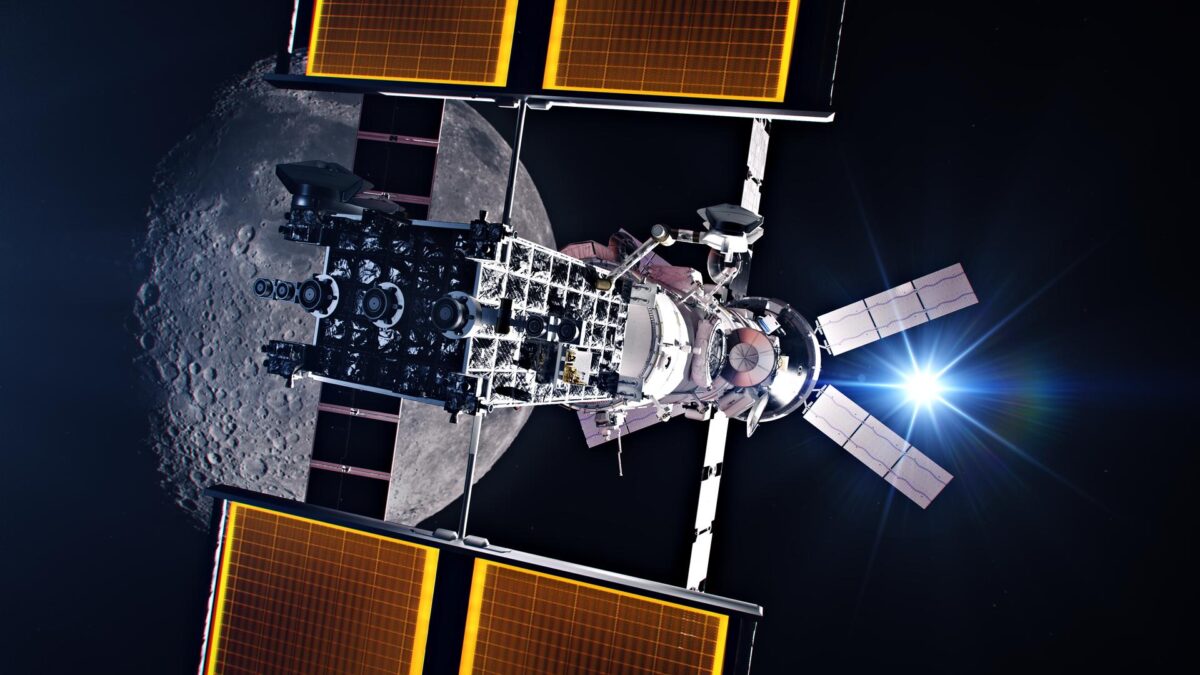This first-of-its-kind structure will play a crucial role in NASA's Artemis missions and act as a stopover for future deep space missions.

A rendering of the Gateway Space Station with the Orion spacecraft docked. Credit: NASA
NASA has just released a new 3D animation showing the exterior of the next Gateway Space Station.
Gateway is designed to serve as a crucial stopover for longer space missions. The first space station to orbit the Moon, scheduled to launch in 2025, will be the first to launch modules. This feat is the result of collaboration between NASA, the Canadian Space Agency (CSA), the European Space Agency (ESA), the Japan Aerospace Exploration Agency (JAXA) and the Mohammed Bin Rashid Space Center (MBRSC).
According to NASA, building a permanent settlement orbiting the Moon will allow astronauts to access the lunar surface and offer opportunities for longer missions. To this end, Gateway will have multiple docking ports for spacecraft, areas for living and working, and laboratories for scientific experiments.
Building a lunar outpost
For the Gateway station to reach lunar orbit, it will be shipped in pieces, similar to how the International Space Station (ISS) was placed in low Earth orbit. Two of the Gateway station modules, the Propulsion and Power Equipment (PPE) and the Habitability and Logistics Outpost (HALO), will travel to the Moon aboard a SpaceX Falcon heavy rocket. The pieces will take about a year to reach their destination orbit, which will take the station around the Moon once a week and provide easy access to the lunar south pole.
During this time, the modules will collect data on solar and cosmic radiation in the lunar environment, which will have long-term impacts on astronauts and their equipment. Because it is in lunar orbit, Gateway will be exposed to more radiation than the ISS, since the ISS is shielded from much of this radiation by Earth's magnetosphere.
Once the PPE and HALO are in orbit, another piece will travel with the Artemis IV crew: the International Lunar Habitat (I-Hab), which will provide a place for the station's astronauts to live during their stay.
Gateway will also feature a robotic arm called Canadarm3The device will assist astronauts during spacewalks and provide a way to move Gateway modules, repair the station as needed and dock visiting spacecraft.
Fully assembled, Gateway will be smaller than the ISS, at 1/5 the size of the Earth-orbiting station. Gateway will measure about 141 feet (43 meters) by 62 feet (19 m) and weigh about 138,900 pounds (63,000 kilograms). At its fastest speed, Gateway will orbit the Moon at nearly 3.2 kilometers (2 miles) per second. Soon, the station will have enough space to accommodate four astronauts at a time.
Unlike the International Space Station, Gateway will not be visible from Earth because it will be about 1,000 times farther from our planet. Astronaut crews will travel to Gateway on NASA's Orion spacecraft.